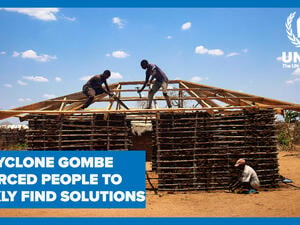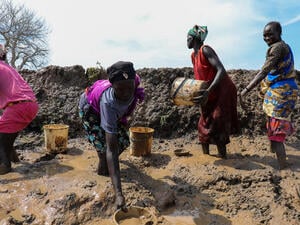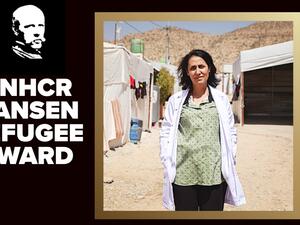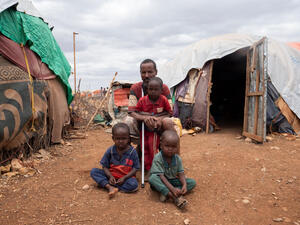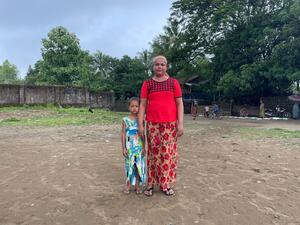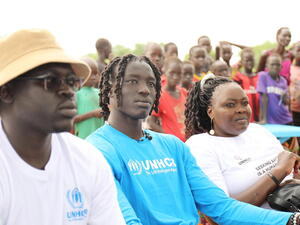Somali displaced continue to move, seeking safety and assistance
Somali displaced continue to move, seeking safety and assistance
A new UNHCR population assessment of the Afgooye corridor west of the Somali capital Mogadishu has found a significant reduction in the number of displaced people living there.
From data collated in May we estimate that up to 120,000 internally displaced people (IDPs) may still be living along this 30 kilometre-long stretch of road. At the height of the displacement crisis in 2010 this was the area with the highest density of IDP population in Somalia. Some 400,000 IDPs had sheltered there at the time.
The latest estimates, based on satellite imagery, illustrate the fluid and volatile environment for IDPs in southern and central Somalia and their constant search for safety, shelter and assistance.
IDPs still make up the vast majority of the corridor's population. Most of them fled fighting in Mogadishu between 2007 and 2010. The drought and famine also led to new displacement in 2011.
However, since the last official population assessment for the corridor in September 2010, a number of events have led to new movements from this area.
Shortly after the declaration of famine last July, many left the corridor for Mogadishu and south central Somalia. Insecurity, difficulties with access to the corridor for humanitarian agencies, and the scale-up of humanitarian assistance in the Somali capital created a pull factor. Satellite imagery analysis also confirmed an increase in IDP settlements in Mogadishu at that time.
The cessation of large-scale military activities in Mogadishu last August led to a steady movement of people from the corridor to the capital. Many appear to have moved to urban IDP settlements or to live with host families. It is expected that the next population assessment in Mogadishu will display a significant increase in IDP numbers.
In February this year, with the announcement of imminent military activities in the corridor more people fled, anticipating an escalation of violence. The majority headed to Mogadishu, while some movements were reported towards other south central areas. As a result of military activity last month, large numbers of those remaining in the corridor also moved towards Mogadishu, Afgooye town and surrounding villages.
Continuing insecurity in Somalia, multiple displacements and lack of access, make efforts to estimate the IDP population extremely challenging. With better access and stabilization of the situation, we plan to undertake an inter-agency population assessment on the ground soon to complement data on the Afgooye corridor obtained through the satellite imagery.
During May, UNHCR distributed assistance to some 100,000 IDPs in the Somali capital and we plan to distribute shelter material for 4,500 families (some 27,000 people) in Afgooye town in the coming weeks.
Meanwhile, in southern Ethiopia's Dollo Ado area, more Somali refugees continue to arrive daily. Since mid-May, more than a thousand new arrivals have been reaching the camps every week. Refugees tell our teams in Ethiopia of growing physical and food insecurity in Somalia.
New arrivals say that Al Shabaab militants are increasingly present in rural areas, carrying out forced recruitment among men, including minors. Continuing insecurity and increased taxation by militant groups are also given as reasons for leaving Somalia. Refugees say that the poor April rains and the destruction of crops by caterpillars have left them without food. Many new arrivals are coming to Ethiopia with all of their belongings, including donkey carts and livestock. They say that they do not foresee a possible return to Somalia in the near future.
For more information on this topic, please contact:
- In Nairobi, Somalia office, Andreas Needham,on mobile: +254 733 120 931
- In Geneva: Andrej Mahecic on mobile +41 79 200 7617

